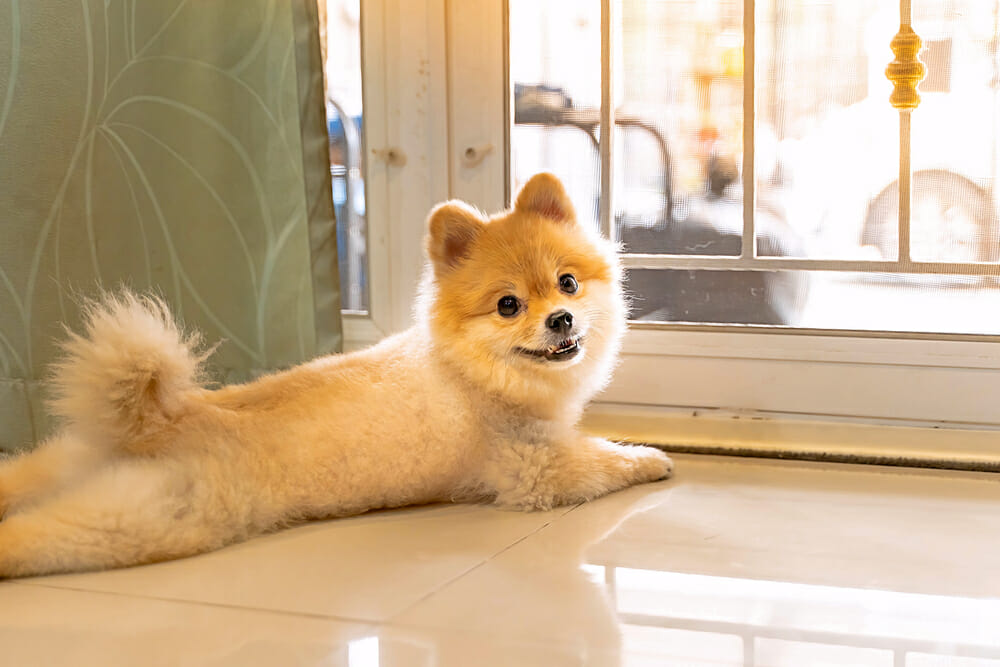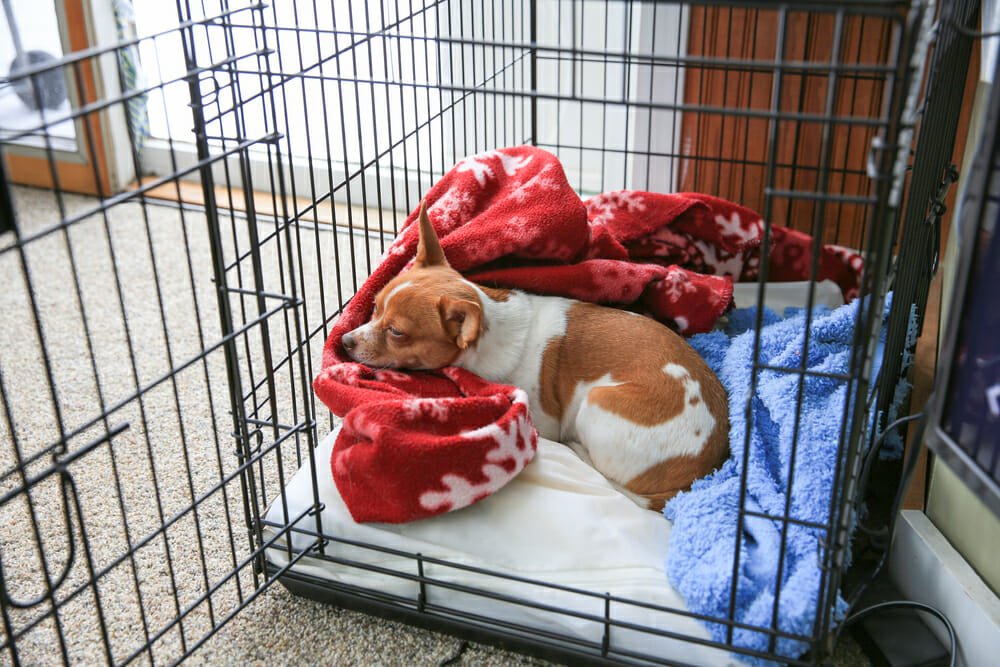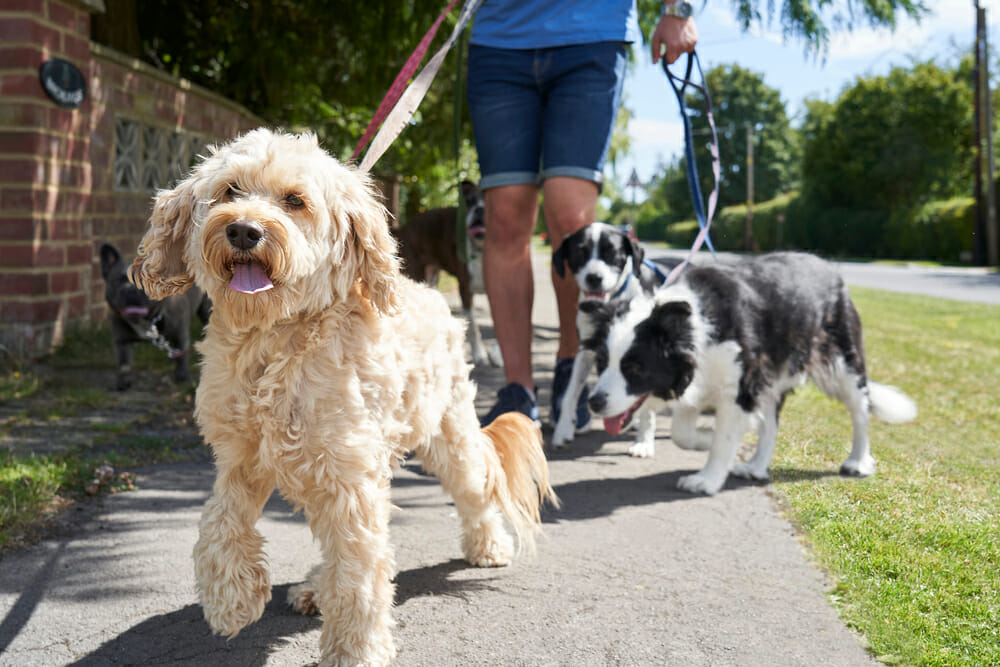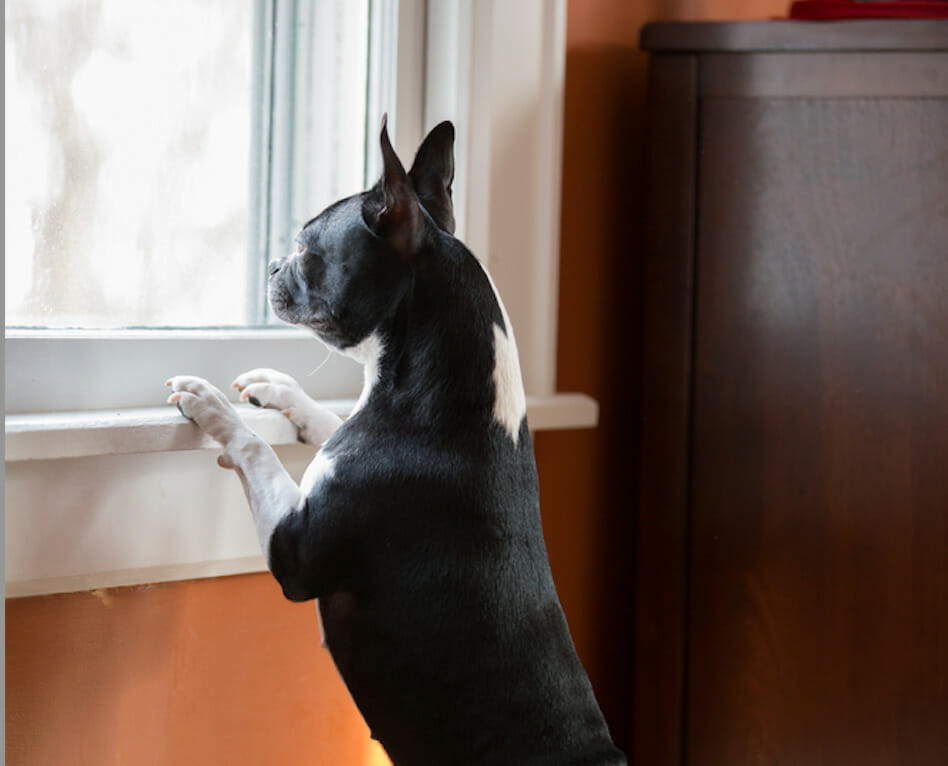There are many perks of working from home when you’re a pet parent. We get to snuggle with our cozy pups and bond with them throughout the day! Many of us even chose to become dog parents during the pandemic because we suddenly had the time and space to give a pup the attention they deserve. However, this new “norm” had us hardly ever leaving the house. Some dogs aren’t able to manage their emotions when alone, possibly resulting in separation distress and anxiety.
As we begin to leave the house more, our pups are not used to extended periods of alone time. Without giving our pups the tools they need, we are setting ourselves and our dogs up for failure by cultivating a serious behavioral problem which can be difficult to overcome.
As a pet parent, it is our job to make sure that we foster confidence in our pups and set them up for success. It’s important to know your dog’s needs so you can approach their specific separation-related behaviors in a way that is most healthy for them.
Here are some tips on preventing and managing separation-related distress and anxiety:
Buy A Pet Cam

First things first, buy a pet camera! Place the camera in the area of your home where your dog spends the most time. This reveals how they actually handle alone time.
To start, leave your dog alone for 5 – 10 minutes. Make sure you’re far enough away that you’re out of sight / out of ear-shot of your dog (yes, your dog can still hear you if you’re on the front or back porch!). Once there, check the camera feed and see what your dog is doing.
Are they exhibiting any stress-related behaviors or are they just waiting for you by the door? Are they able to soothe themselves and settle after a few minutes? Or are they still barking, howling, and being destructive after 5 – 10 minutes?
If they are able to settle themselves after a few minutes of separation-related behaviors, that means they have the internal tools to manage their emotions when you’re gone! If they continue to exhibit concerning behaviors after 5 – 10 minutes, they do not have the tools to manage being alone, and you now have the information of their threshold for alone time, which may be no time at all.
Limit Your Pup’s Alone Time
Once you do your research with your pet cam, you will know how long your pup can handle being left alone. Limit leaving your pup alone for only as long as they can handle it. As your dog learns to be independent, you can slowly increase the duration they’re alone. If you need to leave the home for extended periods of time, consider having a friend or family member hang out with them. Alternatively, hire a dog sitter to stay with your dog while you’re out until their threshold for alone time increases.
Another Option To Decrease Separation Anxiety: Crate Training

Create a positive association to the crate. The crate is a place where your dog can be safe when you are out of the house. You want your dog to feel comfortable in the crate even when you are home. This way, they don’t always associate the crate with your leaving. Work with a trainer on how to properly create a positive association with the crate and work up to leaving your dog in the crate for short periods of time.
Note: for some dogs, confinement can exacerbate separation-related distress and anxiety. You have to learn your dog’s triggers in order to assess what will be most comfortable for them.
“Place” Cue
Teach your pup the “Place” cue! This helps create one spot in your home (usually their bed) where they can go when they are feeling anxious. You’ll be able to help your dog feel safe and secure.
Hire a Dog Walker (Even If You’re Home!)

Hiring a dog walker helps establish a routine for your pup and allow your dog to not rely on you for all resources. This fosters independence and allows your dog to have a social life outside of your relationship. This is another way to help your dog feel comfortable when new people come into the home.
Practicing “Alone Time” & Separation
It’s healthy for your dog to have some “alone time” during the day. Your dog learns that they don’t need to be glued to your hip 24/7 and they become more comfortable and confident even if you are out of sight. You can use the crate or a play pen area, or a room with a door that can close to practice “alone time”. Give your dog a special treat like a kong or puzzle and give them 15 to 30 minutes of alone time while you work!
Putting It Into Practice
There you have it! The best tips and tricks for helping your dog feel comfortable when left alone. And don’t forget to manage your own emotions too, it can be hard leaving our pups home alone! Just remember, we are a part of the “separation anxiety” equation as well. We develop dependencies when we spend that much time with another being too! Sometimes, we may be projecting our own anxieties about our pup being left alone onto them. But with lots of incremental practice, you and your dog can learn to enjoy your time away from each other.




















